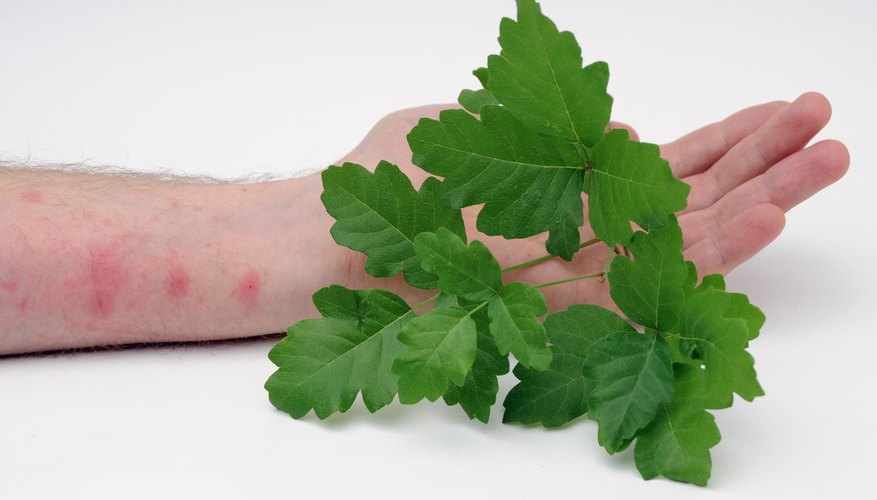People who spend time outdoors, regardless of the activity, will eventually come into contact with a plant that causes them to break into a rash. This type of rash is called dermatitis. Plants can cause three types of dermatitis: allergic, photocontact and irritant contact.
Types
Phytodermatitis is the name given to rashes caused by plants. Plants cause three types of rashes: photocontact dermatitis, irritant contact dermatitis and allergic dermatitis. These types of dermatitis can also be caused by other irritants like metals or animals.
Identification
How can you tell if the rash on your skin was caused by a plant? Phytodermatitis is almost always asymmetrical with a streaky or linear pattern. Phytodermatitis almost always produces an itchy, red rash with blisters or peeling and scaling of the skin.
Allergic contact dermatitis
Allergic contact dermatitis is caused when someone handles a plant that contains a substance they are allergic to. The symptoms include redness, itchy skin and blisters. The most common cause of allergic contact dermatitis is urushiol.
Poison oak, sumac and ivy all contain urushiol. Mango skin, Peruvian lilies, ginkgo leaves and cashew nut oil also contain urushiol but in lesser concentrations.
The first time you come into contact with plants that cause allergic contact dermatitis you may not have any symptoms. However, once you develop symptoms you will always be allergic to that plant. Symptoms will appear 4 to 10 days after coming into contact with a plant you are allergic to.
The most common plants that cause allergic contact dermatitis but do not contain urushiol are Rhus trees, false hellebore, mayapple, primulas and chrysanthemum.
- Allergic contact dermatitis is caused when someone handles a plant that contains a substance they are allergic to.
- The most common plants that cause allergic contact dermatitis but do not contain urushiol are Rhus trees, false hellebore, mayapple, primulas and chrysanthemum.
Some people may develop allergic contact dermatitis to plants not commonly thought of as causing dermatitis, like tomatoes or garlic. The only way to tell for sure what plant is causing your contact dermatitis is to have your doctor test you for allergies.
Photocontact dermatitis
Photocontact dermatitis is triggered by sunlight. You must come into contact with a plant that causes photocontact dermatitis and then expose the affected skin to sunlight. If you come into contact with these plants at night or on an overcast day, you will not develop photocontact dermatitis.
Photocontact dermatitis occurs within hours of sun exposure. Blisters form on the affected skin, and pigment in the skin under the blisters may turn brown, leaving permanent brown spots that are sensitive to sunlight.
- Photocontact dermatitis is triggered by sunlight.
- Photocontact dermatitis occurs within hours of sun exposure.
The herb rue most often causes photocontact dermatitis. Sorrel, osage oranges, oleander, yews and blood root may also cause this dermatitis in some people.
Irritant contact dermatitis
Irritant contact dermatitis develops when people repeatedly handle plants with prickles or barbs. Symptoms include redness, itching and blisters and may take several weeks or months before appearing.
Stinging nettles, brambles, cacti and roses can all cause irritant contact dermatitis.
